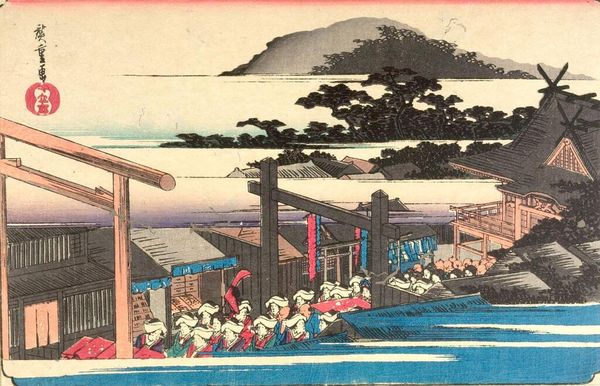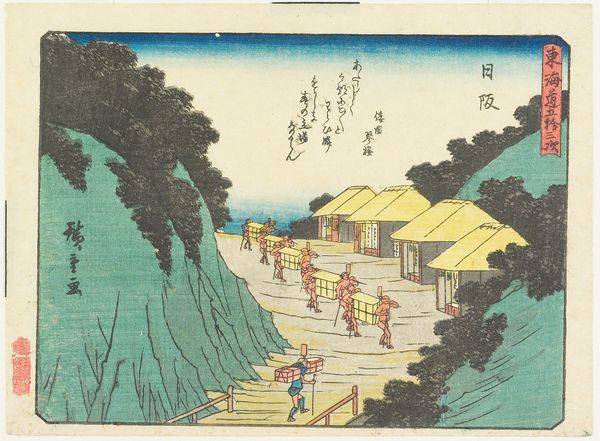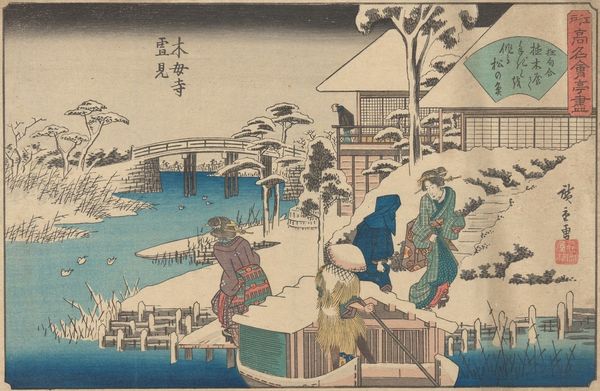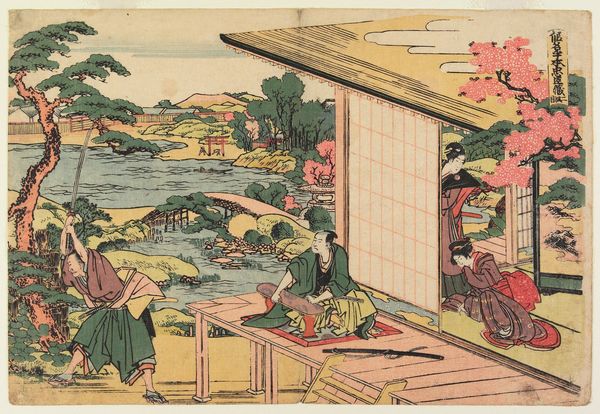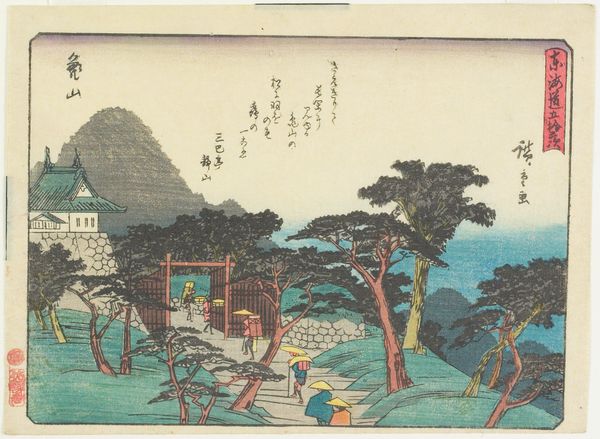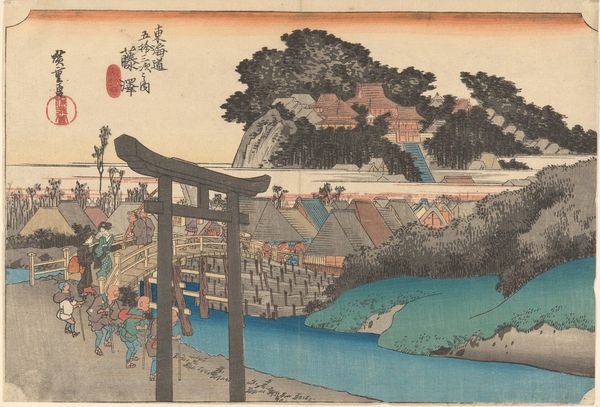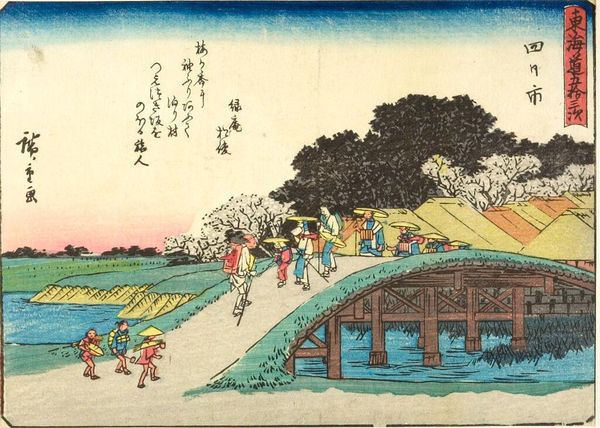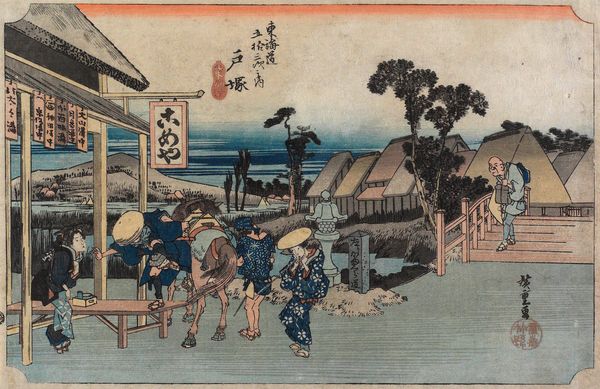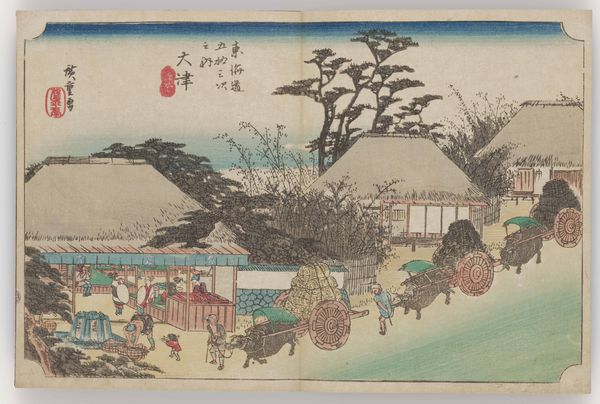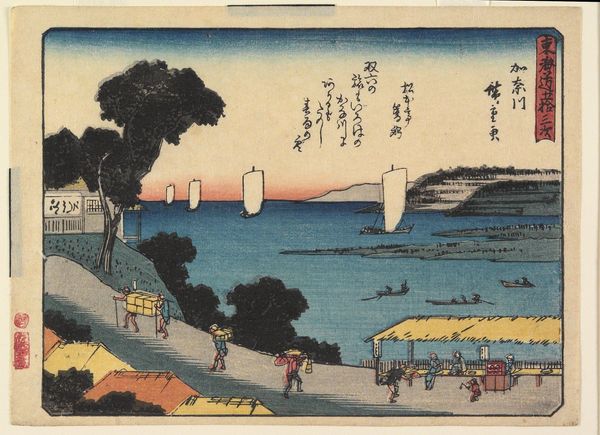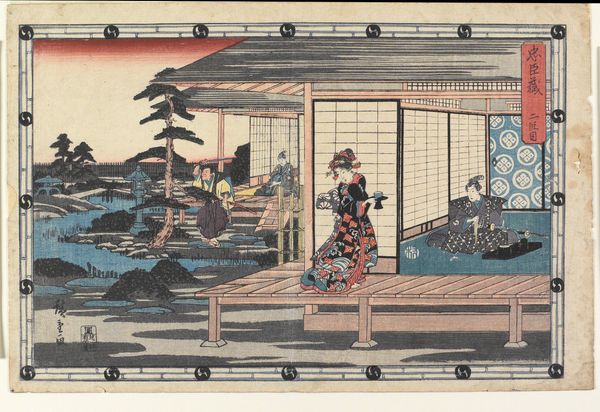
print, woodblock-print
# print
#
asian-art
#
landscape
#
ukiyo-e
#
woodblock-print
#
cityscape
Copyright: Public Domain: Artvee
Curator: Utagawa Hiroshige's woodblock print, *Toto Meisho Shiba Shimei*, likely from the 19th century, depicts a bustling scene near the Shiba Shimei Shrine. The composition immediately draws me into this captivating world. What stands out to you? Editor: The color palette really creates a somber atmosphere, a moodiness heightened by the close proximity of those figures heading towards what looks like some kind of dark foreboding torii gate...it’s almost claustrophobic. Curator: That close proximity certainly emphasizes the communal experience, a central tenet of Ukiyo-e prints that documented the contemporary urban centers of Edo period Japan. This print functions, I think, as a mirror reflecting back the socio-political realities and shared rituals that fostered collective identity. The shrine itself was a vital locus of political power, influencing decisions and cultural norms. Editor: Interesting...And the figures, rendered so uniformly, perhaps are being subtly asked to comply to that power structure you're referencing... Curator: Precisely! By standardizing depictions of figures, ukiyo-e artists perhaps engaged in acts of subtle commentary on hierarchical systems within Japan. There's definitely more at play here than simple aesthetics. Editor: I find the cityscape, especially when combined with this deep focus on the common people, becomes itself almost a character in this story, more than simply an idyllic scene. It is actively engaging and affecting the players on its stage. The composition invites a dialogue on the push-and-pull dynamic of person and place. Curator: Yes, precisely—the blurring of boundaries invites conversation. That might speak to a longing to be known as an individual vs subsumed in the whole. Editor: Seeing this from your activist perspective, especially your ideas on gender and identity, invites questions about who held, or who was refused, space during this historical and cultural moment. How was a woman's role prescribed at that moment in society, if she’s even pictured here, and did these structures invite dissent? Curator: Absolutely, those are vital questions. Thank you for raising them. I'll be returning to these queries for a while, I imagine.
Comments
No comments
Be the first to comment and join the conversation on the ultimate creative platform.

